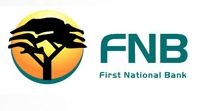The interest rate band wagon2010-11-23 By Cees Bruggemans, Chief Economist FNB Cees@fnb.co.za
When is enough, enough? With SARB lately giving interest rate cuts every MPC meeting, having three times miscalled the bottom of this cycle and events continuing to move the goalposts one way (towards more scope for rate cuts), a bandwagon can form. All aboard. The trend is your friend. Forward momentum makes you look a genius while all you are doing is to bet against the SARB that events will stabilize and turn. Next 0.5% rate cut coming up. So how low can we ultimately go? ------------------ SARB now sits on repo 5.5%, giving us prime 9% (the lowest since February 1974). Prime 9% is based on CPI inflation of 3.2% today, averaging 4.3% in 2011 and still 4.8% in late 2012, and an economy with 2% output gap and 'fragile' recovery. So where next? ----------------- What matters most are events shaping data and forecasts where this will lead in 12-18 months' time. There are only three possibilities with rates. Down, up or sideways. When in doubt (which is most of the time), rather wait for more evidence. Markets give another 0.5% rate cut a 10% probability in January, rising to 20% by June. There is thus only slight hope of another cut. As to what might actually happen, we must revisit the inflation gap, the output gap and the risk outlook. --------------- First the inflation gap. With real interest rate of 5.5% and CPI inflation expected to be 4.8% a year out, the prime rate should ideally be 10.3%. Actual CPI inflation at 3.2% today creates a negative inflation gap of 1.3% (3.2% - 4.5%), explaining prime 9%. The forecast is for CPI inflation to rise from 3.2% to 4.8% within a year. That's not promising, as it will close the negative inflation gap currently holding prime down to 9%. Over the coming year, much depends on whether CPI rises to 4.8% and whether the inflation forecast a year out has meanwhile fallen towards 3.5%. If so, prime could remain unchanged (5.5% + 3.5% = 9%, with a roughly neutral gap). But let's not go there yet. ------------------ The current prime rate of 9% also reflects a negative output gap. Actual output (GDP) is below potential and could benefit from policy support. As the economy's potential expands by 3.5%-4.5% annually (as more people enter the labour force, fixed investment adds to our physical capital, and our cleverness keeps harvesting productivity gains), actual GDP must expand at this pace just to keep the negative output gap unchanged (warranting current prime of 9%). SARB expects 2.8% GDP growth in 2010, 3.3% in 2011 and 3.6% in 2012. This is 'slower' growth than potential GDP growth of 3.5%-4.5%, suggesting our output gap could still widen slightly in 2011-2012. A real rate of 5.5% and inflation outlook of 4.8% gives BASE CASE of prime 10.3%. The presence of a negative output gap of 2% of GDP warrants a prime rate of close to 8%. That still points to rate cuts So what are our main expectations? -------------- The economy will most likely only grow modestly, maintaining its output gap for some while. Meanwhile, inflation could be rising towards 4.8% over the coming year, closing the inflation gap. If inflation expected for 2012 doesn't budge much from 4.8%, the inflation case for higher interest rates grows stronger as 2011 unfolds. Only the negative output gap would warrant keeping prime unchanged at 9% (namely 10.3% BASE CASE minus half the output gap of 2% plus). But what will really, REALLY happen to inflation? --------------- The standard forecast is for CPI inflation to rise in 2011. But if the trade-weighted Rand were to firm another 5%-10% and most other influences remain neutral (a heroic assumption, as some influences will be up, others down), the inflation trajectory could be lowered. This would be the main case for expecting another 0.5% rate cut (or two), were it to happen. But if simultaneously the economy were to grow faster than expected, eroding the output gap, this would erode the case for rate cuts. --------------- As things stands, the biggest likelihood (90%) is for no further rate cuts, with the first rate increase in 2012. The biggest potential game changers are Bernanke's QE2 and Europe's merry band of Club Med brothers weighing on Dollar and Euro (also pulling 'pegged' Asian currencies down with them), still firming the Rand, suppressing our inflation yet lower. But don't underestimate surprise everywhere in inflation and output gap space, for better or worse. This makes it so difficult for SARB to give 'guidance' and for markets to correctly forecast rate changes. There is presently only a slim chance of another rate cut, but watch this space as new data and impressions change in coming months. Global events, the Rand and our GDP growth are key. Only if Rand firms MORE and GDP recovery remains MODEST could rates be cut another 0.5% in 1H2011. Otherwise no dice. Cees Bruggemans is Chief Economist of First National |
The interest rate band wagon
Copyright © 2024 KwaZulu-Natal Top Business
